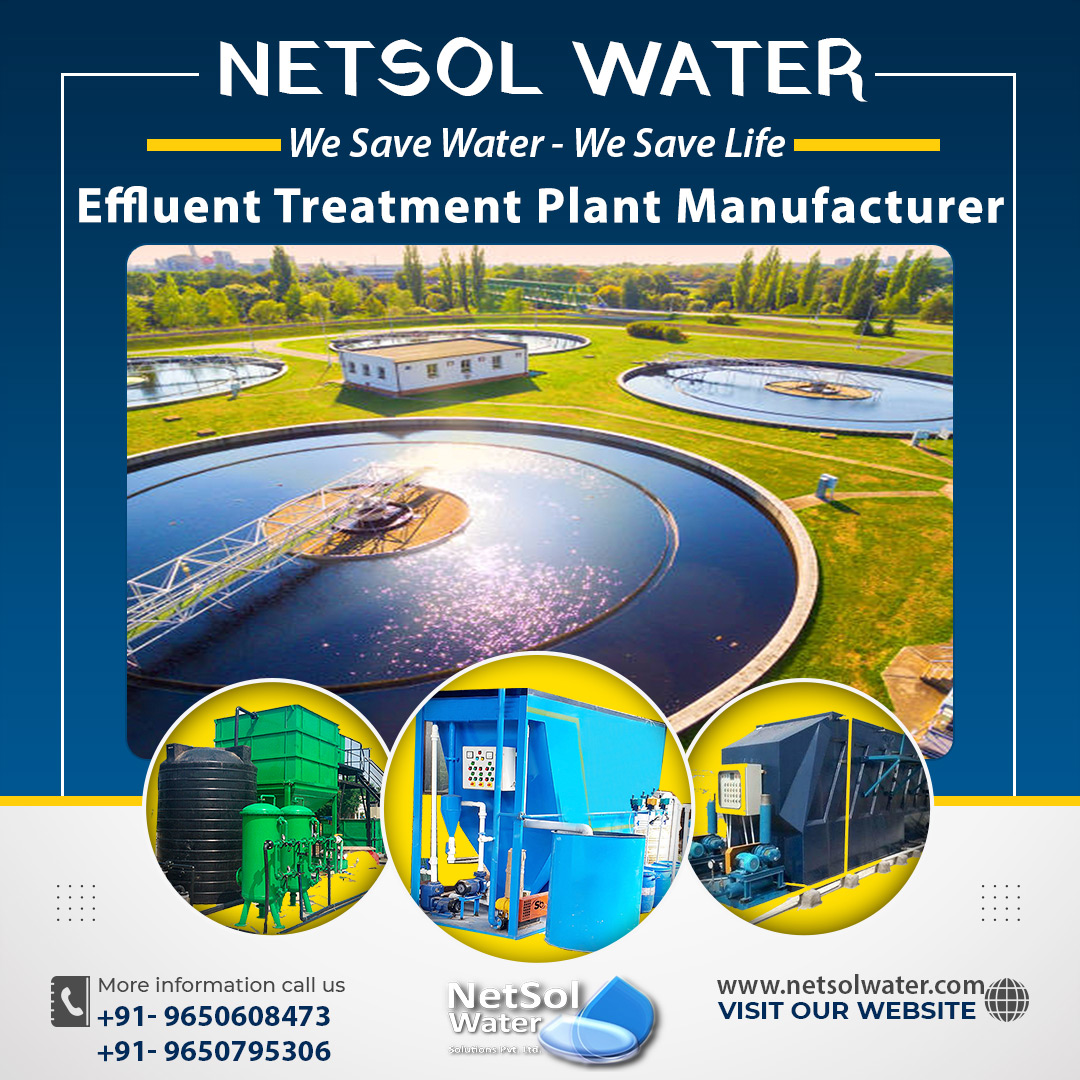What are the Advantages of Common Effluent Treatment Plant?
Water is the most important natural resource. It is utilized for a variety of reasons, beginning with domestic usage and progressing to industrial use. Water resources in the industries get polluted, when they are used. This necessitates the installation of Netsol Water Common Effluent Treatment Plants (CETPs), as they provide numerous advantages.
Role of Common effluent treatment plants
CETPs remove industrial effluents and polluted water from outlet pipelines, reservoirs, rivers, and lakes, among other places, and re-cycle the water for use in a variety of ways. These are often used in sectors, such as textile production, pharmaceutical manufacturing, leather manufacturing, and chemical manufacturing, among other industries. These treatments are used depending on a variety of factors, including the waste water's quality, and the available area or location.
Advantages of Common Effluent Treatment Plants (CETPs)
1- CETP can demonstrate consistency in the system's ability, to forecast treatment values received in the future.
2- CETPs may be used to anticipate the nature of wastewater in the future, and to set a threshold value for a specific parameter.
3- The inclusion of chemicals results in lower operating costs.
4- Continuous planting of microorganisms indicates greater control over wastewater quality.
5- It saves land, which is difficult to assure if all individual units choose individual treatment plants.
6- Nutrient and dilution potential contribution makes complicated industrial waste more degradable.
7- The neutralization and equalization of heterogeneous waste,allows for its treatment to be technologically and economically viable.
8- Professional and trained personnel may be made available for CETP operation, which is not achievable with individual units.
9- Wastewater and sludge disposal becomes more coordinated.
10- Reduction of the regulatory load on various regulatory entities ensures pollution control requirements.
Following are the conditions for establishing CETPs:
• CETPs should be located in industrial estates or among small-scale Industrial units.
• Central assistance will only be accessible for SSI clusters.
• Projects for assistance will be selected based on the toxicity of pollutants, the amount of pollution to be addressed, and the number of units covered.
• CETPs are established and administered, by the State Industrial Infrastructure Corporation, or by an appropriate institution, which includes a cooperative organization of the affected units. These are determined by the respective State Governments or SPCBs.
• The project must have suitable institutional mechanisms for cost-sharing, dues recovery, and management, as well as ensuring adherence to established standards.
• The proposal requires the technical approval by the State Pollution Control Boards.
• The sludge characteristics (hazardous vs. non-hazardous), from the CETP's primary and secondary treatment, should be calculated. As a result, the CETP should include a sludge management strategy that is established based on sludge characterization.
Conclusion
Common Effluent Treatment Plant guarantees that contaminated and polluted water from industry is treated, and made reusable, before being discharged back into the environment. Without this treatment, people will be unable to obtain clean, useable water for everyday duties.
Netsol Water, is India’s top most & leading Common Effluent Treatment Plant Manufacturer. We have a team of highly skilled and experienced specialists, which oversee all elements of quality, so that the firm may satisfy the demands and expectations of its clients and consumers.




